This week, Year 4 have been introduced to their new mini topic – ‘Forces.’
Did you know that without forces our world would be silent and immobile?
The lessons began with the children recognising that everything on Earth is powered by forces, pushes and pulls which act on our bodies and the things around us. Forces make things move and stop moving.
Having discussed pushing and pulling, it was time to demonstrate these forces using our bodies. Working with a partner, the children created their own push and pull forces. Some were easier than others!
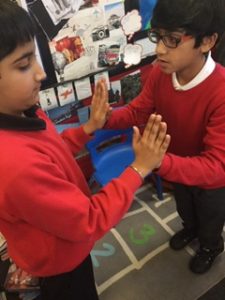
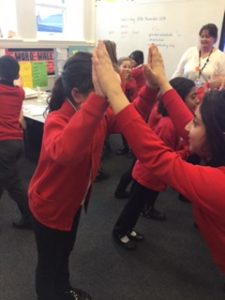
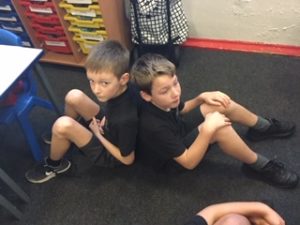
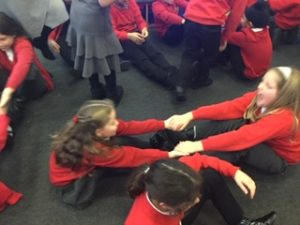
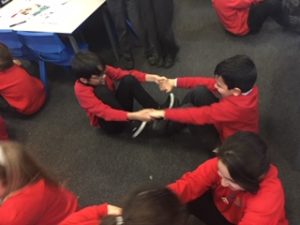
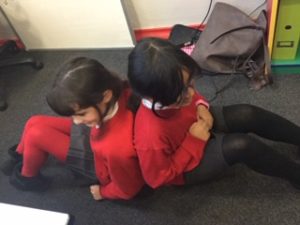
Magnetism
Magnetism is an invisible force. A magnet attracts or repels other items.
We discussed that magnets come in different shapes and sizes: horseshoe magnets (the ‘classic’ magnets we see in pictures!), bar magnets and round magnets.
Each magnet has a south pole and a north pole.
Opposites attract: this means the north pole of a magnet attracts (pulls towards) the south pole of another magnet.
Likes repel: this means that the north pole of a magnet repels (pushes away) the north pole of another magnet and the south pole of a magnet repels (pushes away) the south pole of another magnet. The children were amazed to learn that the Earth is like a giant magnet, and there is a magnetic field all around us. The Earth’s North Pole is also a magnetic north pole: a compass points north towards the North Pole because it is attracted by the Earth’s magnetic field.
Iron is magnetic, so any metal with iron in it will be attracted to a magnet. Most other metals, like aluminium, copper or gold, are not magnetic.
A magnet can move an object without touching it. True or false?
Using iron filings, we tested different magnets to see if this statement was correct.
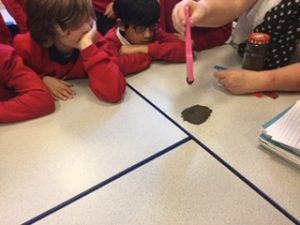
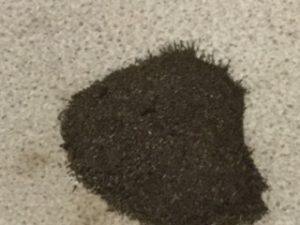
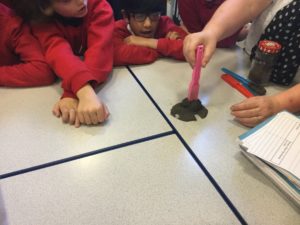
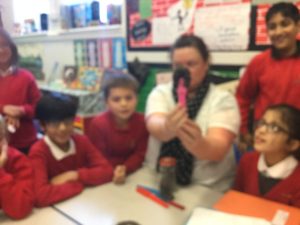
This got us thinking about whether or not the size of the magnet had an impact on it’s strength.
The class were asked to work scientifically to explore this. Using different sizes of magnets and paperclips, the children made predictions, tested magnet, recorded their findings and were then able to decide if size made a difference to strength. One rule was that paperclips were NOT allowed to be joined!
The bigger the magnet, the stronger the force?

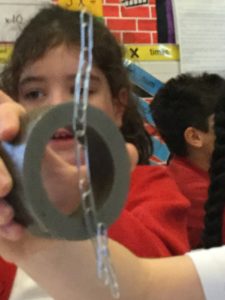
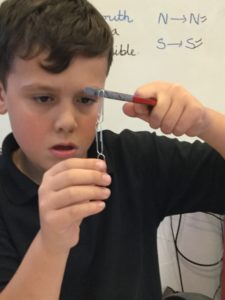
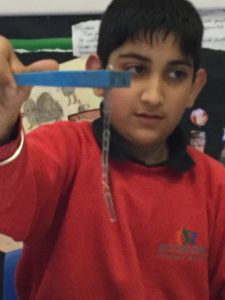

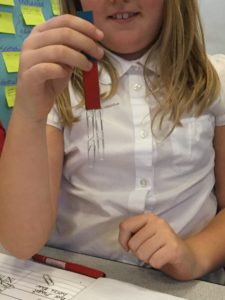
The children were not shown how to carry out the experiment. I was really impressed with how they set about testing the magnets. All around the room it was great to hear some fantastic, scientific conversations taking place. They will be studying their findings in our next lesson.
“Let’s work slowly and add one paperclip at a time.” Devising a systematic approach!
Here are a few magnet activities for at-home learning:
Visit the library and look for information books on magnets.
Investigate how many paper-clips you can pick up with different magnets.
Explore magnets: what do they stick too? What items are magnetic? This could be around the house or outside around your local environment.
Do you have any magnets around the house? What are they used for? Can you investigate different uses for magnets?
Find out about how electricity and magnetism are linked.
Make your own fridge magnets and decorate them in any way you like.